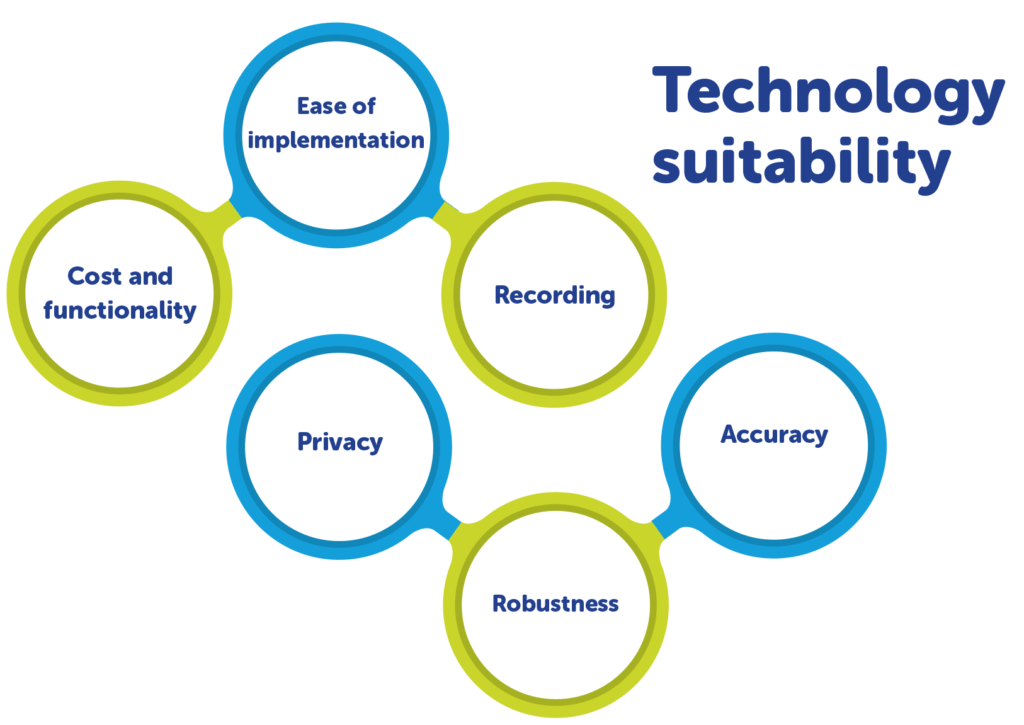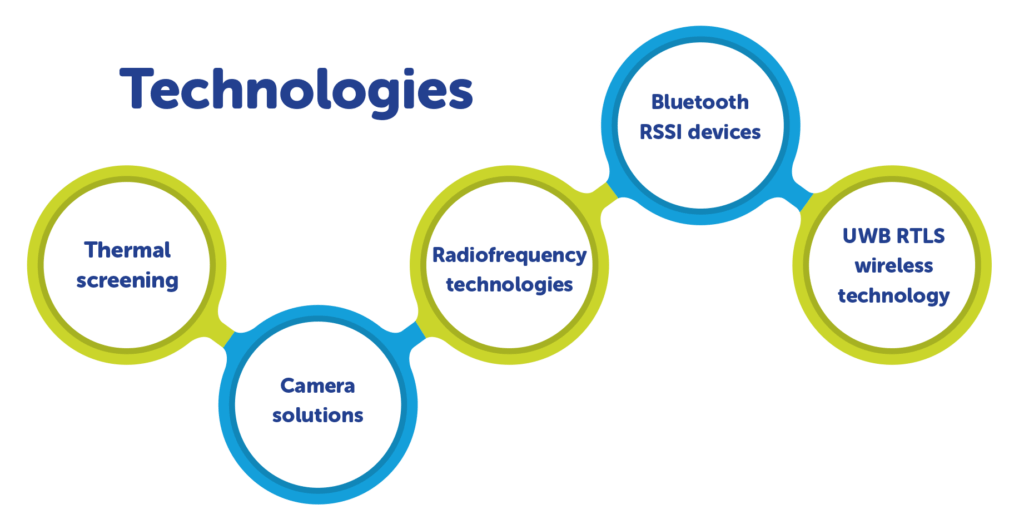When choosing the right solution for your challenge and working environment, you will have to consider the following factors:
Cost and functionality
There is a range of technology solutions at different price points. What you choose will depend on your challenge and what you want to achieve. Options range from simple implementation to quite sophisticated systems whose usefulness may extend to support other aspects of your business, perhaps in other health and safety areas; right through to higher concept solutions of connected networks that could help to deliver higher levels of IoT engagement to your company.
CENSIS and Scottish Enterprise can offer advice on what’s right for you.
Ease of implementation
Again, this will vary depending on what you want to do. Some solutions might require sensors to be distributed to staff, e.g., a wearable device powered by a battery that is charged or replaced as required. Other solutions could involve the installation of radio beacons at carefully selected points, supported by centralised control software.
Capturing data
You need to think about what you want to record and when. Do you need to capture information as soon as a colleague is too close to another? Or would it be more helpful to record incidences that were more than 15 or 20 seconds in length?
You may wish to record every incident for the purposes of contact tracing in the event of infection, or it may be enough for you to quantify how sucessfully physical distancing is being implemented. If the system is able to record exactly where and when incidents take place, or who is affected, this could be useful to help identify and address problem areas or behaviours.
 Privacy
Privacy
If individuals are identifiable and data is recorded, then GDPR must be considered. In some workplaces, staff may be more willing to accept a basic system that simply sounds an alarm and does not record information.
Robustness
A construction site or manufacturing space may require more ruggedised technology than a typical office, so you may have to consider technologies that are suitable for hazardous or challenging environments.
Accuracy
For workplace challenges around physical distancing, you will want to use technology with an accurate detection range. What you choose though will be weighed against other factors such as where it will be used (indoor or outdoor), battery life, technology maturity and cost.
Some solutions use Bluetooth Low Energy (BLE), which is low-cost and doesn’t consume much battery power. However, its method of estimating distance is not as accurate as other technologies, so it may not be ideal for situations where people are habitually working around two metres apart. The system may be either under-sensitive and ineffective or over-sensitive with alarms triggered regularly which could be annoying and could lead to employees ignoring warning sounds.
However, for situations where people are liable to cross each other’s path, it can be an effective way to remind workers who may stray ‘too close for too long’ to a colleague.
Solutions based on ultra wide band (UWB) wireless technology are likely to be more accurate but in real life scenarios it might still be difficult to ensure high accuracy.
An alternative approach might be to use video cameras and analytics to calculate the distance between people with an alarm could be sounded when a breach is detected. This can be quite accurate but requires careful set-up and calibration in each area and may be viewed suspiciously by the workforce.
Privacy and Data Protection
You may have to adapt your company-wide GDPR policies alongside any technology solutions you introduce to your organisation. If individuals are identifiable and data is recorded, then GDPR must be considered.

 Privacy
Privacy Most camera solutions will capture images in 2-D, and so to be used for physical distancing solutions, they need to be mounted on a ceiling or a roof.
Most camera solutions will capture images in 2-D, and so to be used for physical distancing solutions, they need to be mounted on a ceiling or a roof.